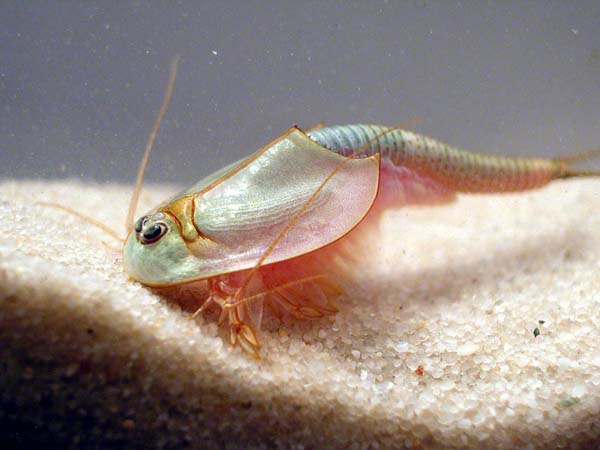Triops – Shrimps Of The Dinosaur Age
Posted in Wildlife A-Z | December 7, 2010 | Comment NowThere is so much that is fascinating about triops. The name triops comes from the Greek phrase that means ‘three eyes’; and on closer inspection you will realize that the triops do boast of having three eyes. Given the fact that they date back to the ages of the dinosaur, they are also nicknamed the dinosaur shrimps. Ideally, the triop is a crustacean and are known to appear like miniature versions of the horseshoe crab. The larger members of the crustacean family would include your lobsters and crabs. The smaller members would be the fairy shrimp, brine shrimp and daphnia. The triop has a relatively short life span and will not generally outlive the 90 days mark. Some of them will perish at the end of 20 days. They will quickly grow to the length of 1 or 2 inches, which is their adult size. Once they hatch, they will double in size with each passing day.
Prehistoric Creatures?
The Triassic triops is a prehistoric creature which is said to be identical in nature when compared to its prehistoric ancestors. They’re said to have survived decades and centuries using the method of dispause or suspended animation. This natural method was employed to help them survive seasonal drought.
State of Dispause:
According to scientists, the triops’ eggs can stay in a state of dispause for a good 15 years. The researchers claim that at the time of entering this state of no-animation, the eggs will develop a thick, hard shell which is said to be drought resistant. This is also called a chorion. This might be the reason why almost a million years after the last dinosaurs left planet Earth, the triops are still here. These little creatures are still going strong, and there’s almost no stopping them.
Dinosaur Shrimps Are Found In:
- Japan
- Africa
- Central America
- Russia
- West Indies
- Australia
- Hawaii
- India
- Galapagos Islands
Methods of Reproduction:
Given the fact that triops are known to live in temporary ponds; these ponds will dry up when the seasons change. It is important for these creatures to complete their life cycle and they will then reproduce within a short time. The adults will die when the water dries up; and their survival will then depend on the eggs that have gotten deposited in the mud or even the substrate.
Some of the members of this species are capable of single parent reproduction, whereas the others will have to fall back on the traditional method of sexual reproduction.





 Save to delicious
Save to delicious Stumble it
Stumble it